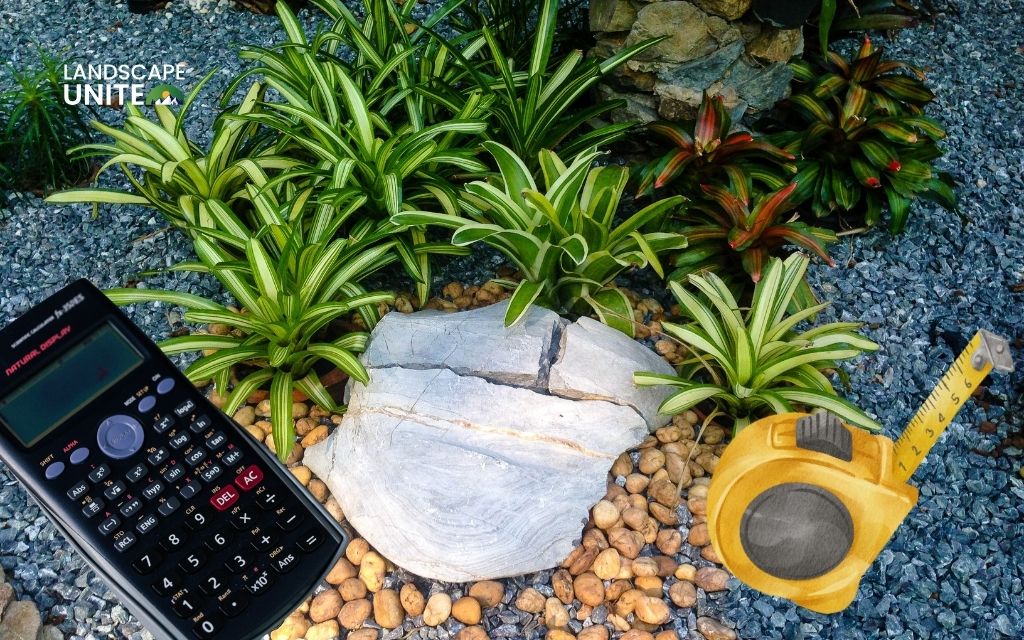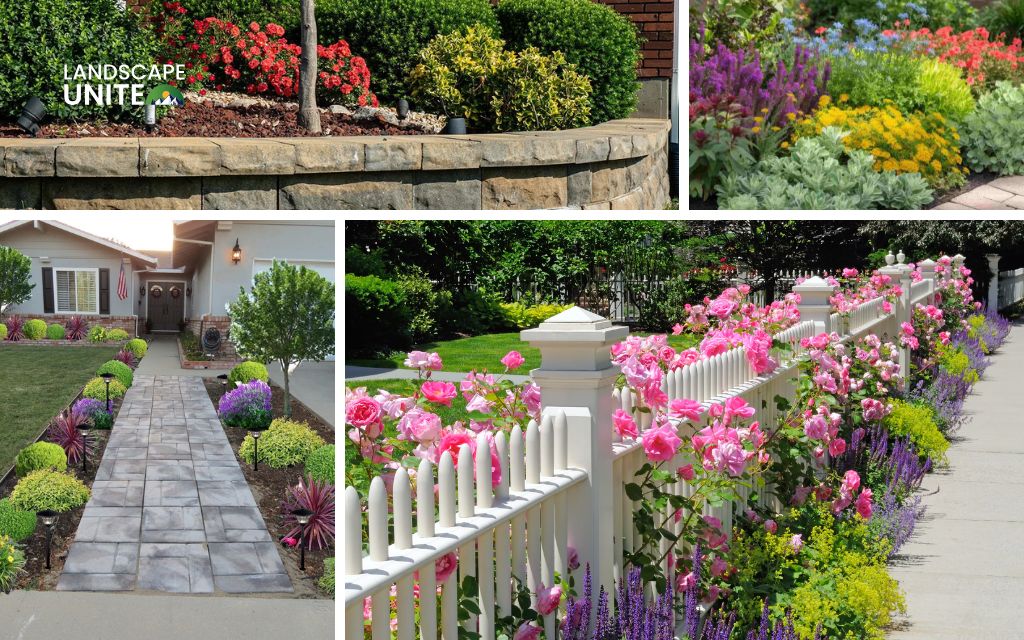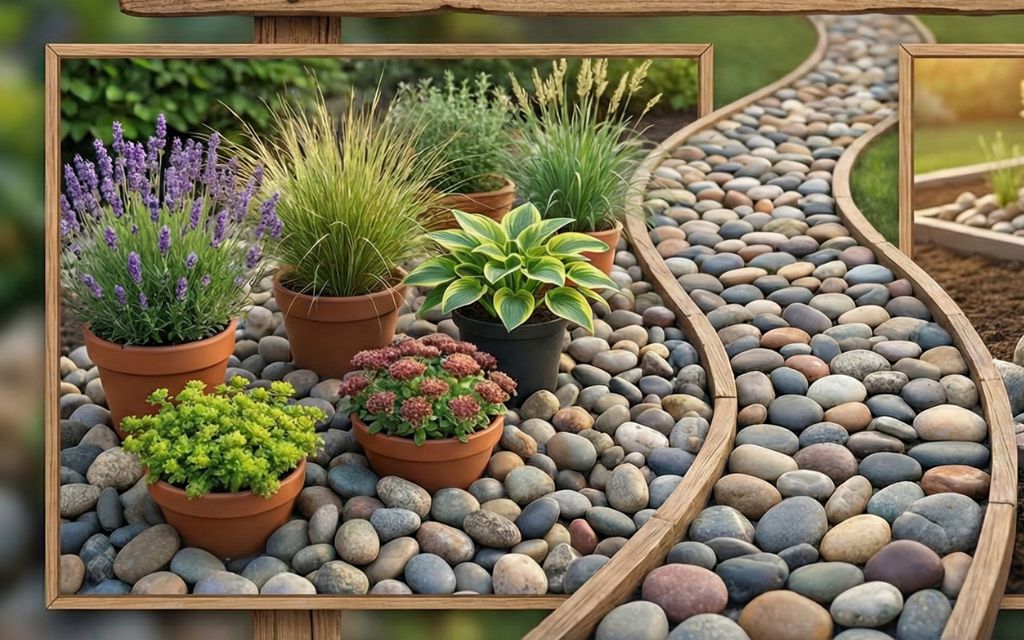Looking for a simple way to make your garden look tidy, reduce weeds, and help your soil thrive? Planting bark (also called bark mulch or garden bark) is one of the most effective and affordable solutions available to American homeowners.
From flower beds to pathways, bark adds beauty and function – but using it the right way makes all the difference between a thriving landscape and a disappointing investment.
In this comprehensive guide, you’ll discover everything about bark mulch – what it is, how to use it effectively, and expert tips to keep your landscape healthy and low-maintenance year-round.
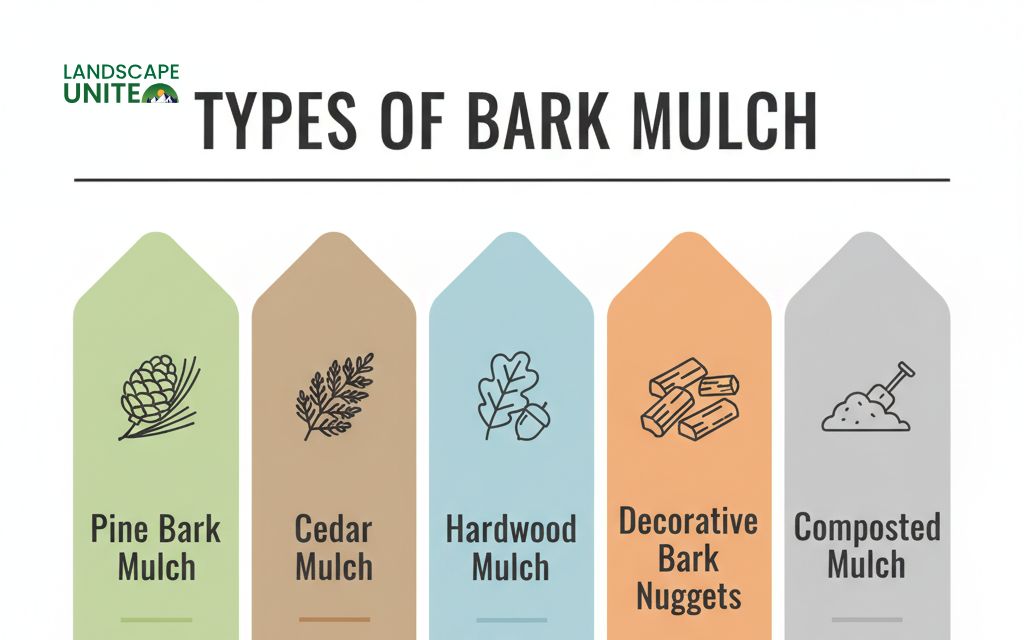
What is planting bark?
Planting bark is a natural mulch made from shredded or chipped tree bark, typically sourced from pine, cedar, or spruce trees. This organic ground cover serves as nature’s protective blanket for your soil, conserving moisture, suppressing weeds, and dramatically improving the visual appeal of garden beds.
Unlike synthetic alternatives, tree bark as mulch works with your garden’s ecosystem, slowly decomposing to enrich the soil while providing immediate benefits.
It’s essentially giving your plants the same protection they’d receive on a forest floor but with the aesthetic appeal perfect for residential landscapes.
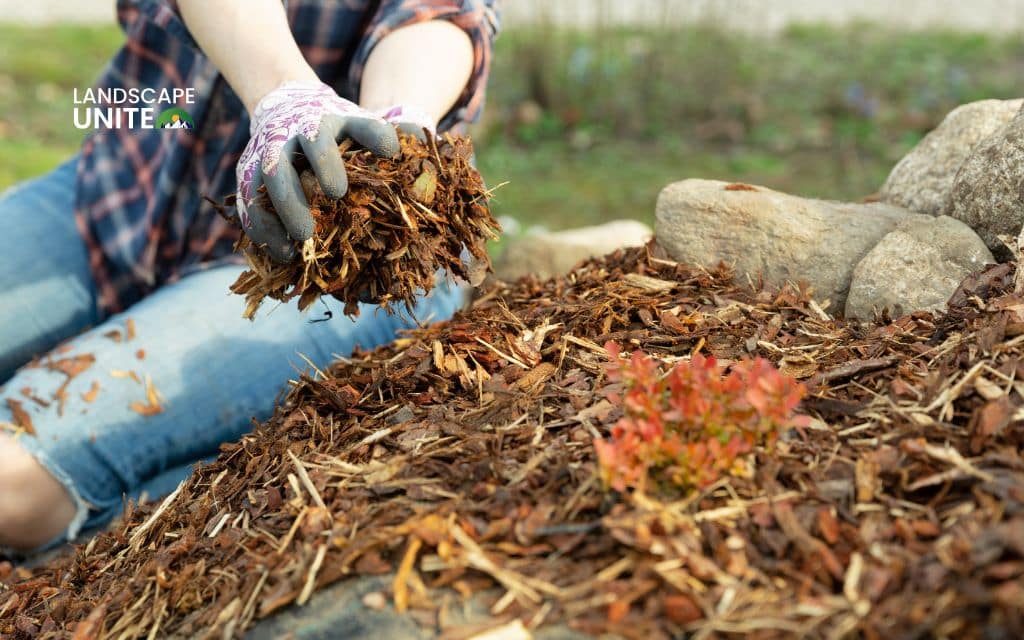
Benefits of using bark in flower beds
Retains moisture like nature’s sponge
Bark in flower beds acts as a natural moisture regulator, reducing water evaporation by up to 70% during hot summer months. This means your perennials, annuals, and shrubs stay hydrated longer, reducing your watering schedule and lowering utility bills.
The insulation properties also keep root systems cool in summer heat and provide protection against freeze-thaw cycles in winter.
Prevents weeds naturally without chemicals
A properly applied layer of garden bark mulch blocks sunlight from reaching dormant weed seeds, preventing germination before it starts. This natural weed barrier means fewer hours pulling dandelions and less reliance on chemical herbicides.
Improves soil over time
As tree bark mulch slowly decomposes, it enriches your soil with organic matter, improving structure and drainage. This gradual process creates the rich, loamy soil that flowering plants crave, while supporting beneficial earthworms and microorganisms.
Adds polished, professional curb appeal
Well-applied bark ground cover creates striking visual contrast that makes your colorful flowers and green foliage pop. This instant “designer look” can increase your home’s curb appeal and property value, often for just a few hundred dollars in materials.
Protects plants from soil-borne diseases
During heavy rains, bark prevents soil splash that can carry fungal spores and bacteria to plant leaves. This protective barrier reduces common issues like black spots on roses and blight on vegetables.
Types of bark mulch (and how to choose the right one)
Pine bark mulch
- Appearance: Attractive reddish-brown chips with a fresh, natural pine fragrance
- Best for: Flower beds, decorative borders, and acid-loving plants like azaleas and blueberries
- Pros: Most affordable option, long-lasting, excellent visual appeal
- Cons: Can float away during heavy rainfall if used on slopes
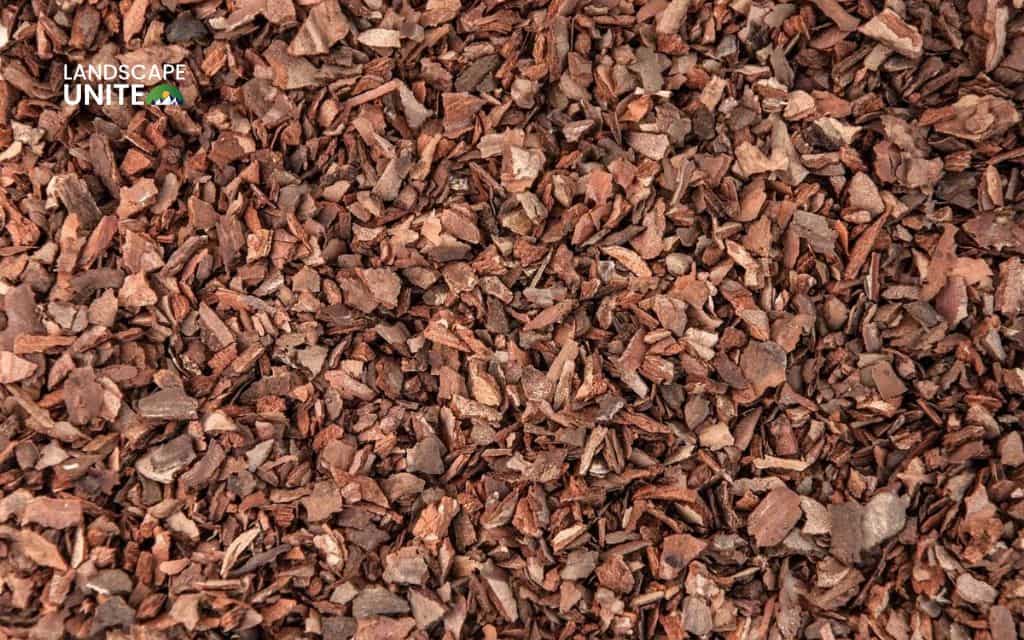
Cedar bark mulch
- Appearance: Light brown to golden tones with a pleasant, distinctive scent
- Best for: Ornamental beds and high-traffic pathways
- Pros: Naturally repels insects and rodents, extremely slow to decompose
- Cons: Higher upfront cost, provides fewer soil enrichment benefits
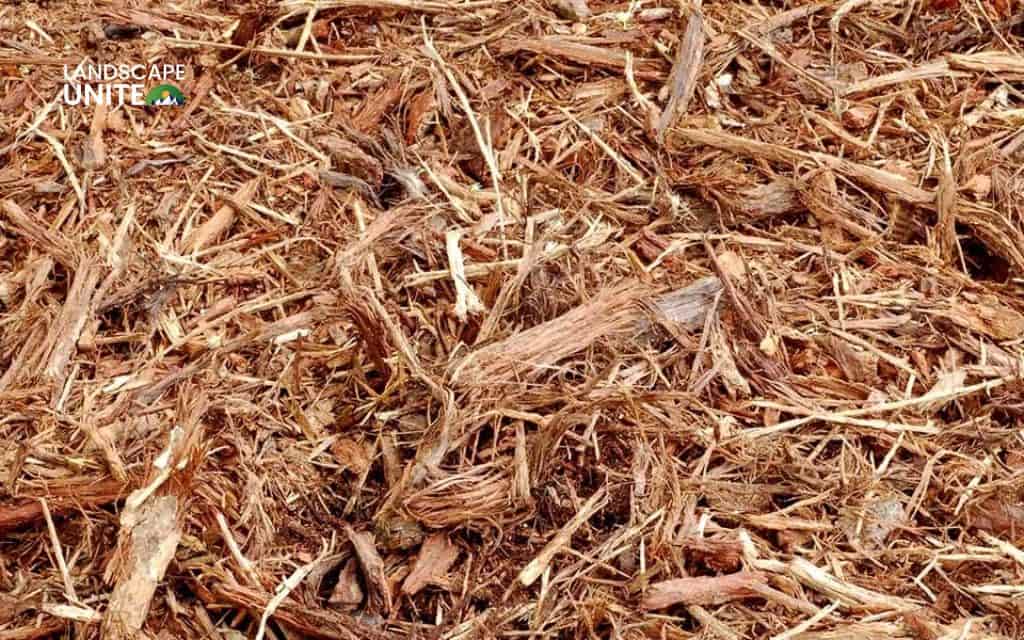
Hardwood bark mulch
- Appearance: Rich dark brown color with fine, uniform texture
- Best for: Shade gardens and bark ground around mature trees
- Pros: Breaks down at optimal rate, providing steady soil nutrients
- Cons: Color fades within 12 months, requiring annual refreshing
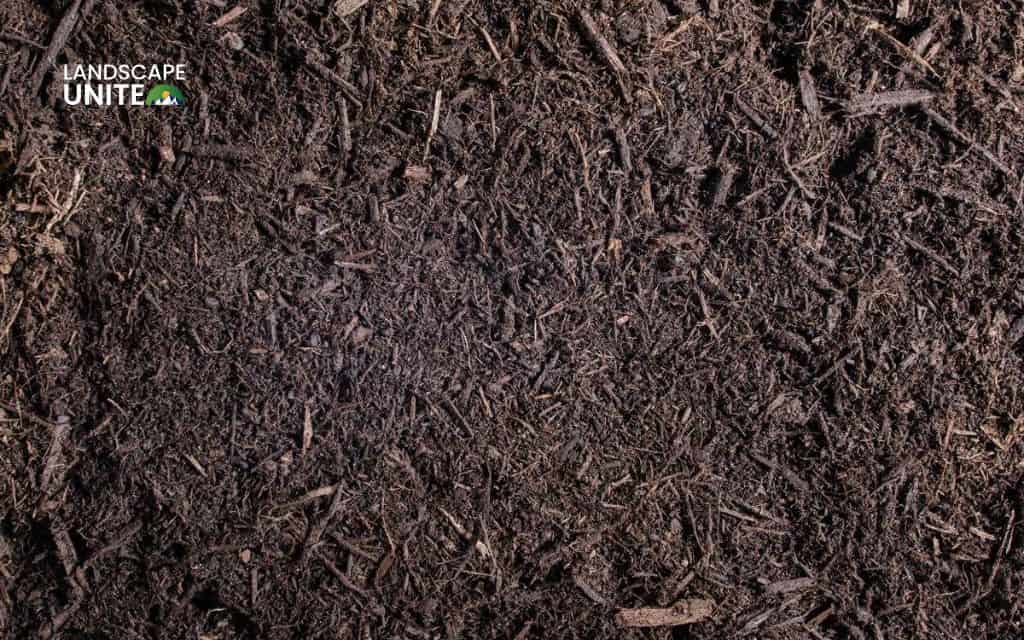
Decorative bark nuggets
- Appearance: Chunky, uniform pieces creating a clean, high-end landscape finish
- Best for: Bark ground cover in play areas, commercial landscapes, and formal gardens
- Pros: Extremely durable, superior weed suppression, safe for children
- Cons: Slow decomposition means minimal soil improvement benefits
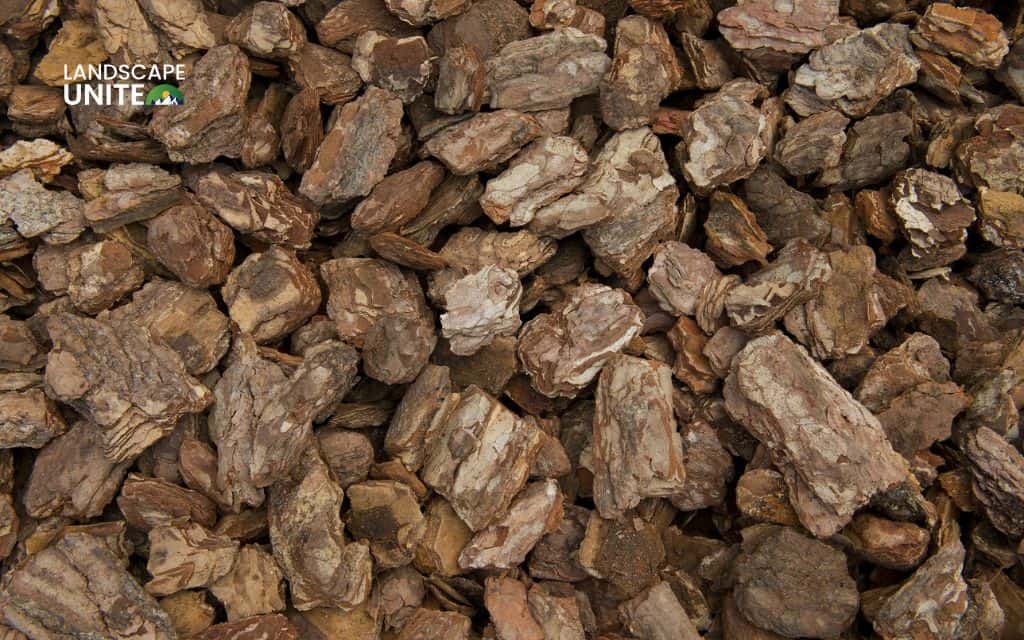
Composted bark mulch
- Appearance: Fine texture with deep, rich brown to black coloration
- Best for: Vegetable gardens and bark in flower beds where soil improvement is priority
- Pros: Provides immediate organic matter and nutrients to soil
- Cons: Requires more frequent replacement than coarser alternatives
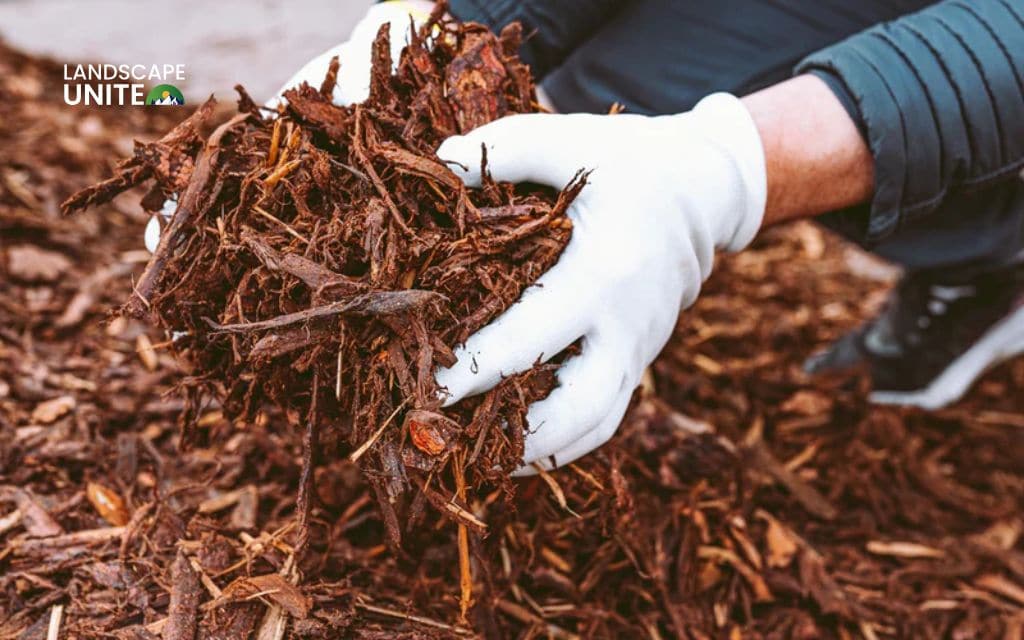
How to apply planting bark (step-by-step)
Step 1: Prepare the area properly
Remove all visible weeds, rocks, and debris from the planting area. Rake the soil surface smooth and water lightly – damp soil helps the bark mulch settle and stay in place during application.
Step 2: Install weed barrier (when needed)
For areas with persistent weed problems, lay landscape fabric before applying planting bark. However, skip this step in naturalized beds where you want plants to self-seed and spread organically.
Step 3: Apply bark at correct depth
Spread tree bark as mulch in an even 2 – 4 inch layer across the entire soil surface. Always maintain a 2 – 3 inch gap around plant stems and tree trunks to prevent moisture-related rot and pest issues.
Step 4: Water thoroughly after application
Lightly water the newly applied garden bark mulch to help it settle into place and begin the moisture retention process immediately.
Step 5: Establish regular maintenance schedule
Rake bark ground cover annually to prevent compaction and improve air circulation. Plan to refresh with new material every 1 – 2 years as the organic matter decomposes.
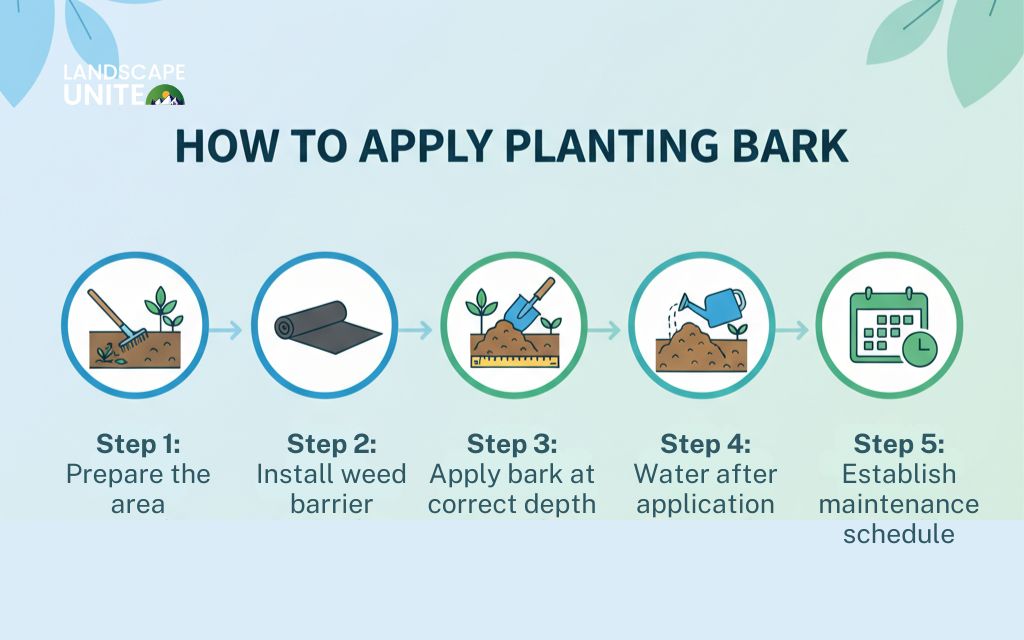
Can you mix bark mulch with soil?
Yes, but only in specific situations and with proper technique. Mixing small amounts of fine tree bark mulch into clay-heavy soil improves drainage and adds organic structure.
However, avoid incorporating large bark chunks directly into planting soil, they can tie up nitrogen during decomposition, potentially starving your plants of this essential nutrient.
When mixing bark in garden soil, always add compost or slow-release fertilizer to maintain proper nitrogen levels for healthy plant growth.
How to maintain bark ground cover
Refresh annually for best results
Rake and fluff your bark ground once yearly to prevent compaction that blocks air and water circulation. This simple maintenance step extends the life and effectiveness of your mulch investment.
Top up every 1-2 years
Replace faded or decomposed planting bark to maintain consistent 2 – 4 inch depth and fresh color. The timing depends on your climate, bark type, and desired appearance standards.
Monitor for pests and fungal issues
Cedar tree bark as mulch naturally repels many insects, while other types may occasionally harbor beneficial or problematic organisms. If mold appears, rake the surface to improve air circulation and drainage.
Maintain proper plant spacing
Never pile bark in garden beds against plant stems or tree trunks. This “volcano mulching” traps moisture and creates ideal conditions for rot, pest infestations, and plant suffocation.
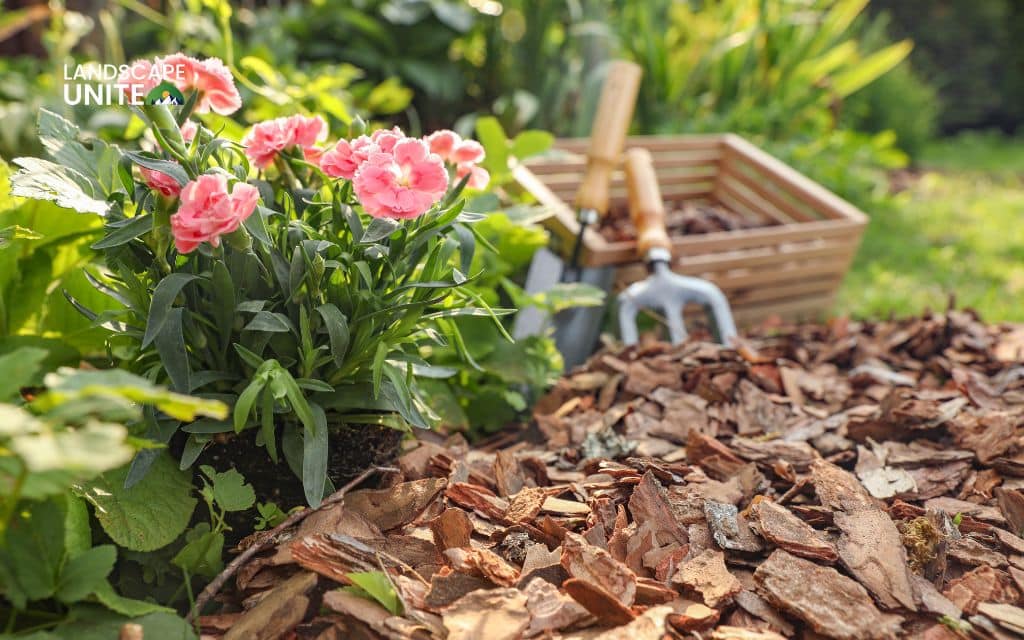
Conclusion
Whether you’re refreshing tired flower beds, protecting young trees, or adding style to garden pathways, planting bark offers a simple solution that delivers both immediate beauty and long-term garden health benefits.
The key to success lies in choosing the right type for your specific needs and applying it correctly. With proper selection and maintenance, bark mulch keeps your yard looking fresh, healthy, and beautifully low-maintenance for years to come.
Looking for more ways to enhance your flower beds with natural solutions? Visit our gardening resource center for proven tips, product recommendations, and seasonal maintenance guides!
Frequently asked questions (FAQs)
Can I use bark in flower beds safely?
Absolutely! Bark in flower beds is not only safe but highly beneficial. It helps retain moisture, prevents weeds naturally, and gradually improves soil health – making it one of the best mulching choices for flowering plants.
Is bark or mulch better for my garden?
Tree bark mulch typically lasts longer and provides more decorative appeal, while organic compost mulches offer faster nutrient release. Choose planting bark for longevity and aesthetics, or compost mulch for immediate soil enrichment.
How deep should bark mulch be applied?
The ideal depth for bark mulch is 2 – 4 inches. This thickness provides optimal moisture control and weed suppression without blocking air circulation or creating pest-friendly environments.
Will bark attract unwanted bugs to my garden?
Cedar tree bark as mulch naturally repels many insects, while other bark types are generally pest-neutral. Avoid untreated wood chips that can harbor termites, but quality bark mulch products pose minimal pest risks.
How often should I replace bark mulch?
Replace bark ground cover every 1-2 years, depending on your climate, the specific bark type, and your aesthetic standards. Faster-decomposing varieties may need annual refreshing, while cedar and pine bark often last two full seasons.
